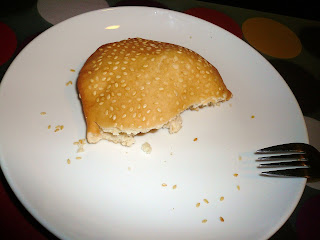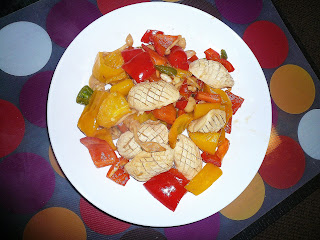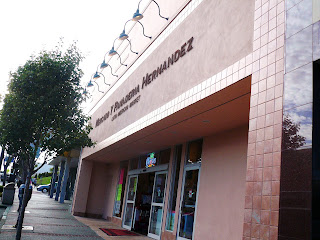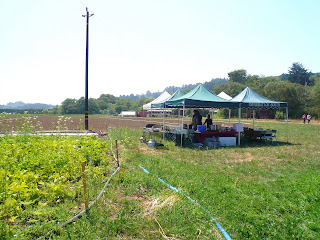You're in for a treat. Keep reading to find out!
Before 2009 is over (at least on the West Coast), I need to squeeze in a final top 10 list of the year.
I went through many changes in 2009, and I've learned a lot. This blog is one of the new things I tried this year, and I am incredibly grateful to all of you who gave me feedback and support. I dedicate this post to you (you know who you are!).
My top 10 food-related reflections/experiences/whatever of 2009:
10. I finally became a vegetarian. Turned out to be much easier than I thought.
9. I launched Guerrilla Vegetarian after putting it off for a long time. The writing process was very liberating, however painful at times.
8. I took up baking. Obviously a sure-fire way to satisfy my sweet tooth, but it also opened up a new universe in cooking for me.
7. I felt so blessed by the culinary bounty of the Bay area. The produce is first-rate, then you have authentic cuisines from around the world at your fingertips (plus at affordable prices!).
6. Panaderias (Mexican bakeries). I couldn't believe how much I had missed before moving to the Bay area, where I had my first encounter with Mexican baked goods.
5. David Lebovitz, former Chez Panisse pastry chef, now Paris-based food blogger. He always makes me laugh with his super-sarcastic style and musings about Paris, whenever I need a mood boost.
4. Vegetarian meat. I know it's weird, but I sampled a huge variety from vegan meatballs to Chinese fish cakes this year. Perhaps that's why I didn't feel deprived at all as a vegetarian. Hooray for our capitalist economy in which any niche need is met!
3. I made a birthday cake for my Mom, who lives thousands of miles away in Hong Kong. Although I ended up eating the cake by myself, my Mom got to see it on this blog. I was glad to be able to do something special for her.
2. Because of all of the above, I gained 5-10 pounds this year. Notice I try to be vague here.
1. Really, it's you. (Yeah, it's the tagline of Yahoo!'s new branding campaign too.) Given my meager readership, EVERY ONE of you keeps me going. Don't be shy and leave a comment. Check back often and tell others to visit!
Now you see how thrilled I was when my farewell post to Oakland got picked up by the blog A Better Oakland, which drove many visitors here.
I am also indebted to many other people who lent me a hand during this difficult year. So, THANK YOU all again. Here are the vegan Meyer lemon bars from Veganomicon I made for a friend that I want to share with you. Let's end the year with a sweet note!
Vegan Meyer lemon bars - browner than I expected because of the unrefined sugar I used
Wish you a wonderful and delicious 2010!


























































